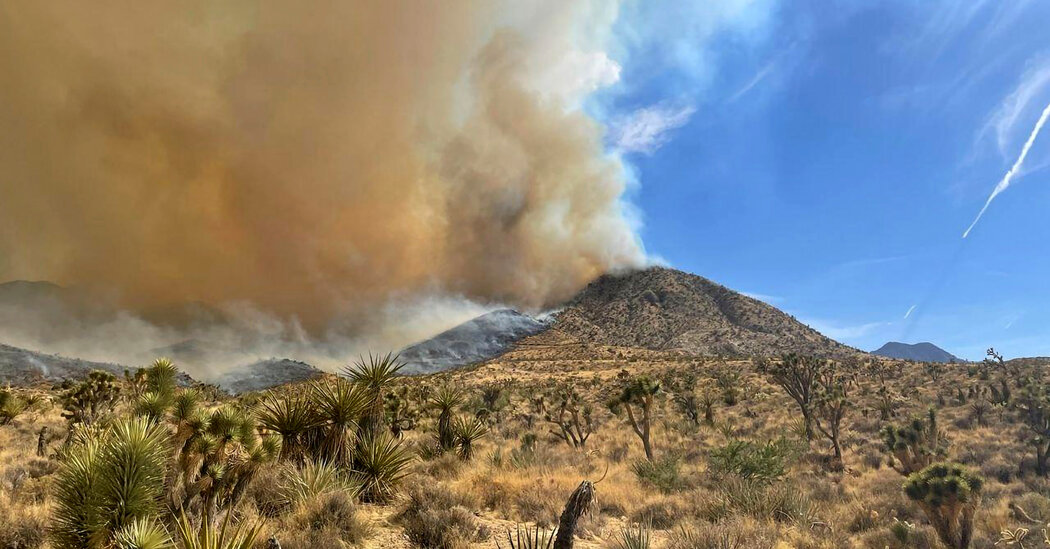
 News
News 
California’s largest wildfire this year has swept across thousands of acres in the Mojave Desert since the weekend, and has been so powerful that it has produced spinning columns of fire, officials said.
The blaze, called the York fire, began on Friday on private land in the New York Mountain Range of the Mojave National Preserve in San Bernardino County in southeastern California, according to InciWeb, a government website that tracks wildfires. By Sunday, the flames had crossed into Nevada.
No injuries or deaths were reported.
Around 77,000 acres had burned with no containment, fire officials said Monday night, making it the largest wildfire in California so far this year. The state’s second largest active fire, the Bonny fire in Riverside County, has consumed only about 2,500 acres.
Wildfires have consumed about 100,000 acres in California so far this year, according to Cal Fire, the state’s firefighting agency. After a couple of devastating wildfire seasons, including a record 4.3 million acres burned in 2020, California had a relatively quiet wildfire season last year, with fewer than 400,000 acres burned.
Dry and windy weather have helped make the York fire significantly more dangerous and challenging to control.
Daniel Swain, a climate scientist at the Institute of the Environment and Sustainability at U.C.L.A., said on social media that it was unusual that the state’s largest blaze of the season so far was occurring in its southeastern desert region.
“Given an exceptionally wet winter and cool spring, larger fires in sparsely vegetated areas that are typically ‘fuel limited’ should be expected due to the extra vegetation growth such conditions foster,” he said.
Mr. Swain said that the increasing prevalence of invasive cheatgrass had helped bridge the gaps in certain years, like this one, offering a more continuous fuel bed than would usually be the case in desert ecosystems. “This is bad news for Joshua trees, which are not especially fire adapted,” he said.
On Sunday, firefighters witnessed spinning columns of fire known as fire whirls, which form when extreme heat and strong winds combine. Hazardous fire conditions also prompted road closures in the area and pushed smoke across state lines, into Nevada and even southern Utah.
The combination of drifting smoke and thunderstorms on Monday created abysmal travel conditions for some air travelers. At Harry Reid International Airport in Las Vegas, more than 300 flights were delayed and more than three dozen others were canceled, according to FlightAware, a flight-tracking service.
It has been a devastating and dangerous fire season so far in other parts of the United States, and across the world. A wildfire in southern Oregon last month burned more than 40 homes and disrupted 911 services.
Farther north, in Canada, hundreds of wildfires have burned more than 47,000 square miles of forest, an area the size of New York State, since May. The fires have displaced more 25,000 Indigenous residents across the country, according to government officials, and smoke has routinely pushed southward, choking cities and towns along the East Coast and in the Midwest.
Wildfires in Europe this year have turned what would usually be relaxing vacations for tourists into sweltering and dangerous trips. Wildfires in Greece have caused wartime-scale airlifts of tourists and ammunition depots to explode. In Sicily, churches have burned to the ground with relics of saints inside them.
24World Media does not take any responsibility of the information you see on this page. The content this page contains is from independent third-party content provider. If you have any concerns regarding the content, please free to write us here: contact@24worldmedia.com